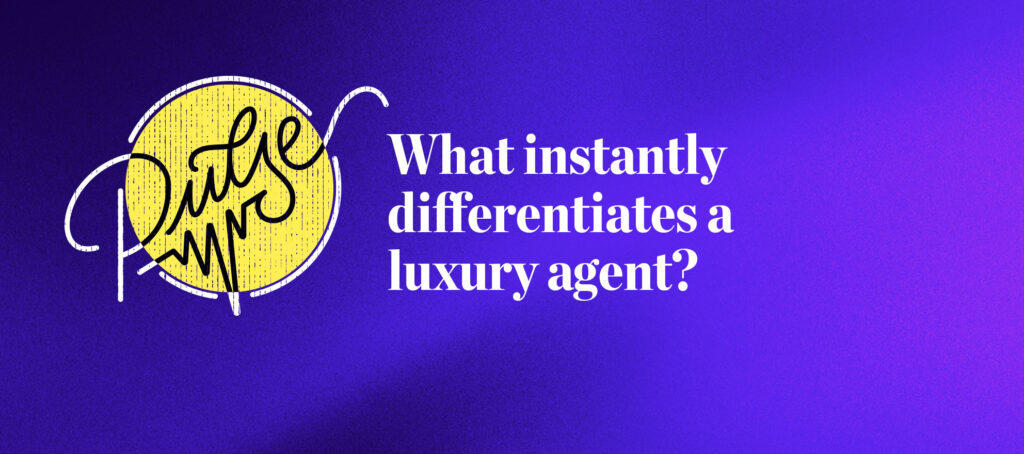Make your property websites ADA compliant and fully accessible to all visually impaired Americans. Website accessibility shows everyone that they matter and that their life’s experiences are represented.
Finding a home in today’s current market is hard enough for those seeking starter homes or rentals, but imagine having the additional barriers of being unable to search online, or lacking access to search options that accommodate your disabilities. Bronwen Tedesco shares her story about her first apartment search out of college and offers insights into how far our industry still has to go to accommodate those with disabilities trying to navigate the housing market.
Searching for a house you cannot see
All blind and disabled people encounter a common challenge most sighted people do not understand: website inaccessibility. As a recent college graduate and someone who is totally blind, I attempted to do my own independent search for a new apartment to rent.
I feel like my experiences and those of others in the same position are overlooked, if not ignored, because of common misconceptions about blind people. If blind people were held to the same expectations as their counterparts, there would not be discussions about making the housing market fully accessible in 2022 because it would have happened a long time ago, when screen readers first started being used.
By not making sincere efforts to ensure that house searching is doable for people who are blind, the industry exacerbates the stereotype that all blind people have caregivers, which in many cases is not true.
Technology companies must assume that someone will just help us, rather than making the internet accessible enough to do it ourselves.
How the ADA protects disabled consumers
The goal of the ADA is to, by law, ensure that all people with disabilities participate in all aspects of society. In the twenty-first century, much of what we do in life is digital.
When websites are not accessible, people with disabilities are not able to fully participate in society because whatever they are prevented from doing in that moment limits their participation. In our day and age, the internet is a part of society and under the ADA, people with disabilities have the right to participate fully in their communities.
Approximately 2.2 billion people worldwide have visual disabilities. The term vision loss, visual disability or visually impaired refers to individuals who reported that they are blind or unable to see at all or have trouble seeing even when wearing glasses or contact lenses. In America alone, there are at least 12 million people affected by visual disabilities; 93 percent of Americans use the internet.
When websites are not accessible, a significant portion of the population lags behind, unable to perform simple tasks such as filling out forms online, applying for jobs and internships, online shopping, etc.
House searching is not something that can be done completely independently, at least not for now, but there have been steps in the right direction.
When will the tech catch up to the needs of visually impaired consumers?
Some websites have descriptions of the images displayed on their listings but many do not. There are vague descriptions of kitchens and rooms, if lucky. Otherwise, the accessible tagged images with alt text are mainly banners and company logos that read as “graphic” or “no description available.”
Hot Tip: What is “alt text”?: Alt text can be read by screen readers and helps people who are blind or who have low vision understand what images and other objects are in a document. You can add alt text to objects, such as pictures, clip art, charts, tables, shapes, SmartArt, embedded objects, and audio or video objects.
Many text descriptions are not useful and provide no information about properties, as if to say, “Well, at least we have alt text and are avoiding these lawsuits.” Some companies genuinely try, while others just have random bits of useless alt text all over the place not necessarily related to the properties, in no way serving the purpose of alt text.
When done properly, “Text to speech” screen readers read aloud what is on the screen, allowing users to execute functions with keystrokes such as reading specific sets of text on computer screens, cell phones, iPads and tablets. When an application or website is not accessible with a screen reader, it means it is not compatible, no matter how it runs on the device and looks to people with sight.
If a user cannot carry out functions using a screen reader, it is not accessible.
Resources for improving your websites
The Web Accessibility Initiative (WAI) is an online resource for consumers, businesses and web developers to learn and implement accessibility enhancements to their websites. There are several tools there that can help you take steps to build a more compliant and digitally equitable site for your clients.
The American Foundation for the Blind offers several resources for developers and pushes the concept of “digital” inclusion further by offering labs and consulting for businesses working hard to address the accessibility of their websites for all consumers.
I hope you will encourage your company to make sincere efforts this year to make your property websites ADA compliant and fully accessible to me and all visually impaired Americans. Website accessibility is extremely important, not only to avoid lawsuits but to show everyone that they matter and that their life’s experiences are represented.
Lisa Larson is Managing Director, North America at Restb.ai. Connect with her on LinkedIn.



 Are You Interested in West Eleventh Residences Miami?
Are You Interested in West Eleventh Residences Miami? Are You Interested in ONE Park Tower by Turnberry?
Are You Interested in ONE Park Tower by Turnberry? Are You Interested in Diesel Wynwood Condominium?
Are You Interested in Diesel Wynwood Condominium? Are You Interested in Five Park Miami Beach?
Are You Interested in Five Park Miami Beach? Are You Interested in Cipriani Residences Miami?
Are You Interested in Cipriani Residences Miami? Are You Interested in Bentley Residences Miami?
Are You Interested in Bentley Residences Miami? Are You Interested in Baccarat Residences Brickell?
Are You Interested in Baccarat Residences Brickell? Are You Interested in Aria Reserve Miami?
Are You Interested in Aria Reserve Miami? Are You Interested in 888 Brickell Dolce & Gabbana | Miami?
Are You Interested in 888 Brickell Dolce & Gabbana | Miami? Are You Interested in 600 Miami WorldCenter?
Are You Interested in 600 Miami WorldCenter? Are You Interested in HUB MIAMI RESIDENCES?
Are You Interested in HUB MIAMI RESIDENCES? Are You Interested in WALDORF ASTORIA RESIDENCES?
Are You Interested in WALDORF ASTORIA RESIDENCES?